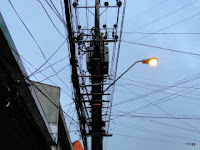Have you ever found yourselves in the position to get a cool gadget (or product) on your hands just to find out, minutes or hours later, that it is annoyingly difficult to use? Have you experienced that transition of feelings, from excitement to frustration? You don't have to be a gadget freak or an "early adopter" to have found yourselves in that unfortunate position; it happens to most of us, typical consumers.
The problem with usability is that it is an elusive concept. To make something innovative, you just need to push things a bit forward (by featuring new technology or a new working principle or a new application, etc.). But for that innovative something to become a success, amongst other things, it must also be usable. People need to feel comfortable using it. And no, people don't like reading manuals.
While a growing number of technical standards exists, which make things much more straight-forward for manufacturers, there are still plenty of traps to fall in. Take for instance the option menus of digital cameras. Some are definitely a bit "weirder" than others. Or think of the vast majority of the mobile mice, which while advertised as being fully functional, space-saving cousins of the normal mice, they often turn out to be difficult to guide and tiring to use. And what about the early GPS-enabled PDAs, which had displays that were simply not bright enough to be used in daylight (or even if they were bright enough, they couldn't stay away from the charger for more than 90' or so). There are even some food products (e.g., dehydrated sauces in powder form) that have failed to get consumer acceptance simply because they included non-obvious steps in their preparation.
There is no secret that successful innovation must be able to take advantage of human intuition and/ or common sense. Exceptions do exist (e.g., specialised equipment for industrial/ medical/ etc. use), but usually even there, a clever, intuitive design is a plus, simply because it simplifies the learning process and reduces the chances of human error. If you have some time, you might want to visit the Media Lab of MIT for some refreshingly simple ideas.
To be fair, though, usability is no easy task to master. Different cultures, different tastes, and that "cursed" characteristic of humans to learn and adapt to most things, which will ensure that at least a handful of people will feel comfortable with any given new product, thus misleading its designer....
Fortunately - for us end users - the product market ecosystem evolves somewhat similarly to the natural ones: the fittest products spread more, persist for longer and inherit some of their characteristics to their derivatives. And even, it is those products that set the requirements for the products or services to come.
[By the way, my first blogspot template was taking advantage of my full 1680x1050 desktop resolution... until I remembered that the typical netbook is restricted to 1024x600. Good thing I'm a netbook owner, too!]
(Photo: "Complicated cabling", by me.)
Subscribe to:
Post Comments (Atom)




No comments:
Post a Comment